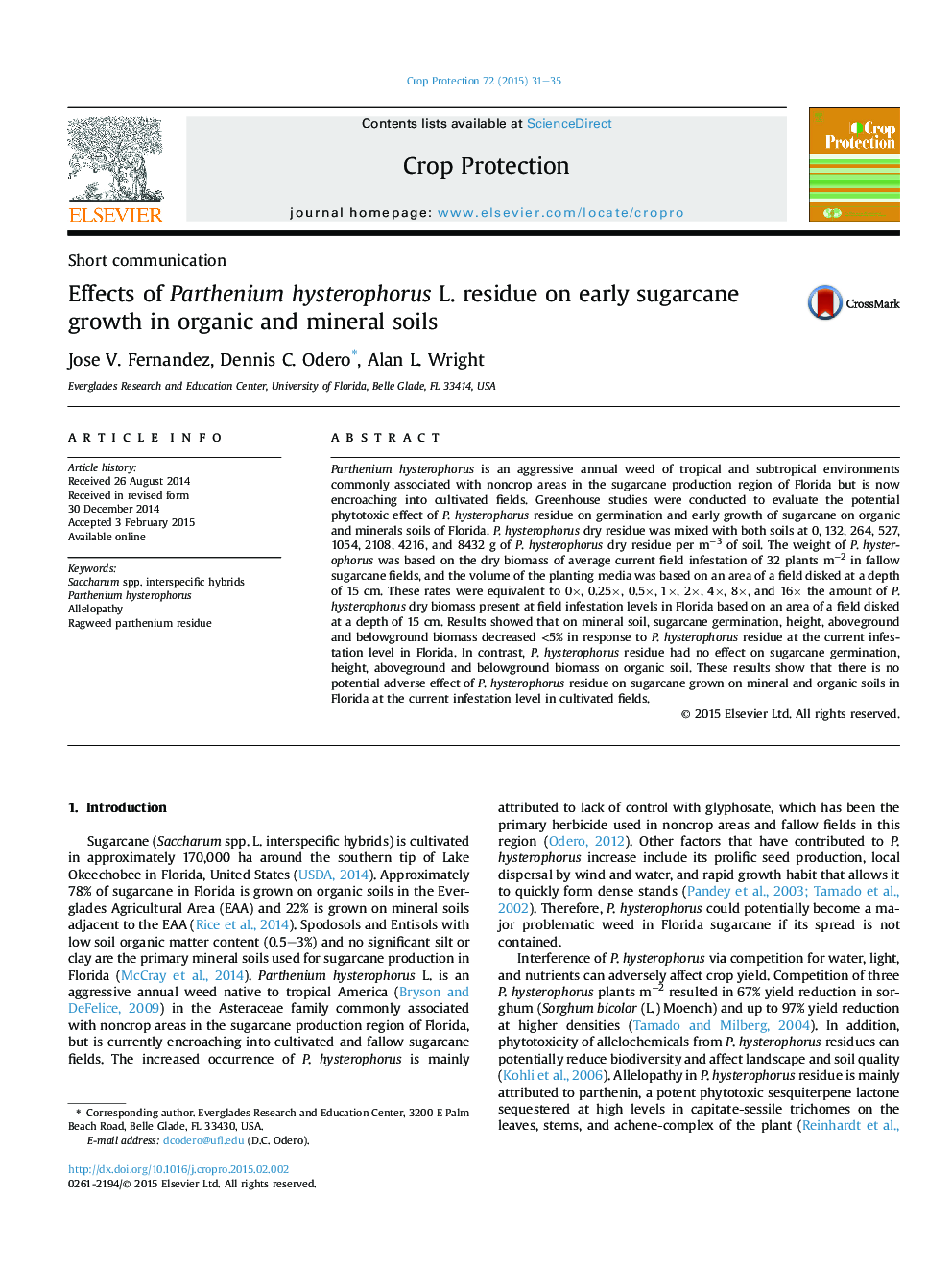| Article ID | Journal | Published Year | Pages | File Type |
|---|---|---|---|---|
| 6373421 | Crop Protection | 2015 | 5 Pages |
Abstract
Parthenium hysterophorus is an aggressive annual weed of tropical and subtropical environments commonly associated with noncrop areas in the sugarcane production region of Florida but is now encroaching into cultivated fields. Greenhouse studies were conducted to evaluate the potential phytotoxic effect of P. hysterophorus residue on germination and early growth of sugarcane on organic and minerals soils of Florida. P. hysterophorus dry residue was mixed with both soils at 0, 132, 264, 527, 1054, 2108, 4216, and 8432Â g of P. hysterophorus dry residue per mâ3 of soil. The weight of P. hysterophorus was based on the dry biomass of average current field infestation of 32 plants mâ2 in fallow sugarcane fields, and the volume of the planting media was based on an area of a field disked at a depth of 15Â cm. These rates were equivalent to 0Ã, 0.25Ã, 0.5Ã, 1Ã, 2Ã, 4Ã, 8Ã, and 16Ã the amount of P. hysterophorus dry biomass present at field infestation levels in Florida based on an area of a field disked at a depth of 15Â cm. Results showed that on mineral soil, sugarcane germination, height, aboveground and belowground biomass decreased <5% in response to P. hysterophorus residue at the current infestation level in Florida. In contrast, P. hysterophorus residue had no effect on sugarcane germination, height, aboveground and belowground biomass on organic soil. These results show that there is no potential adverse effect of P. hysterophorus residue on sugarcane grown on mineral and organic soils in Florida at the current infestation level in cultivated fields.
Keywords
Related Topics
Life Sciences
Agricultural and Biological Sciences
Agronomy and Crop Science
Authors
Jose V. Fernandez, Dennis C. Odero, Alan L. Wright,
